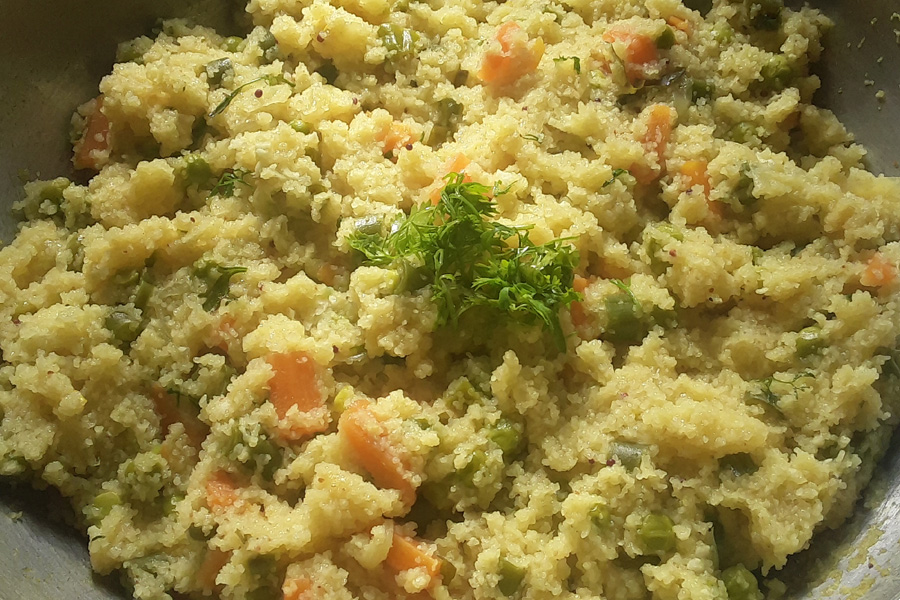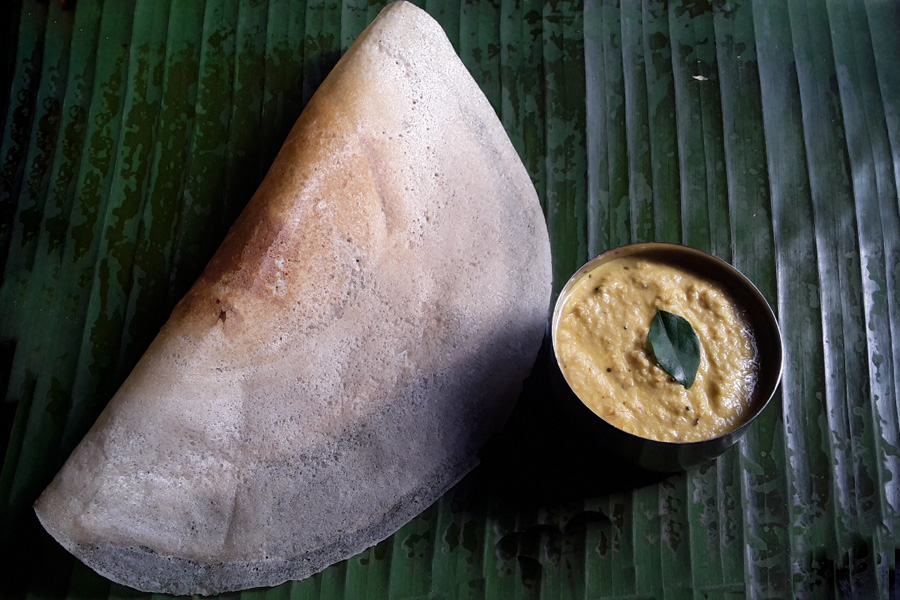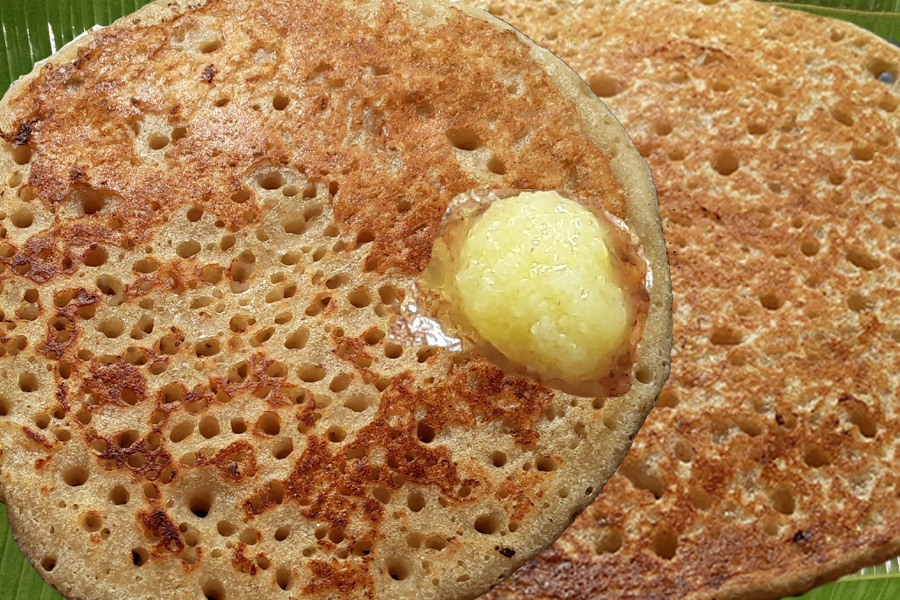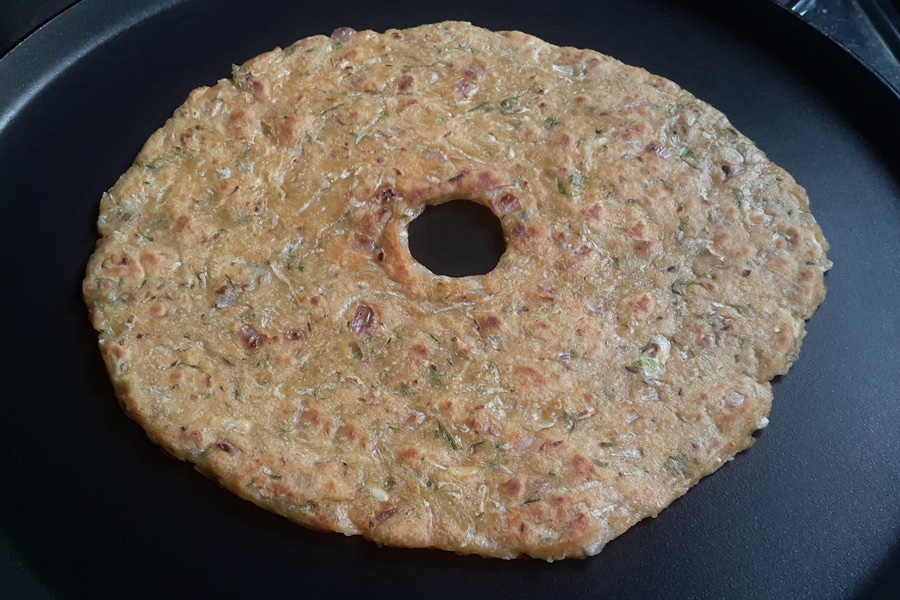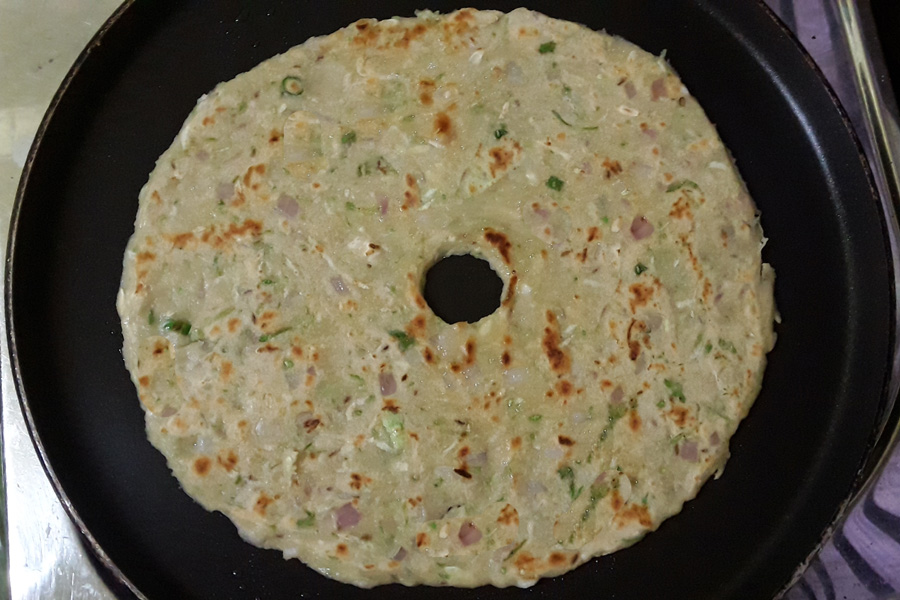Gundpongle

By Leena Hegde, Puttanamane
This recipe is from my paternal grandma's (Smt. Sharada Hegde, Puttanamane) kitchen. As a child, these Gundpongle fascinated me a lot for its sponginess and the special pan in which the dumplings are cooked. So, my granny would turn left over dosa batter into Gundpongle batter by mixing some spices and other ingredients, and make hot Gundpongle for after school snack. She was a great culinary artist. Apart from her cooking skills, I remember her as a strong, multitalented lady and a loving grandmother.
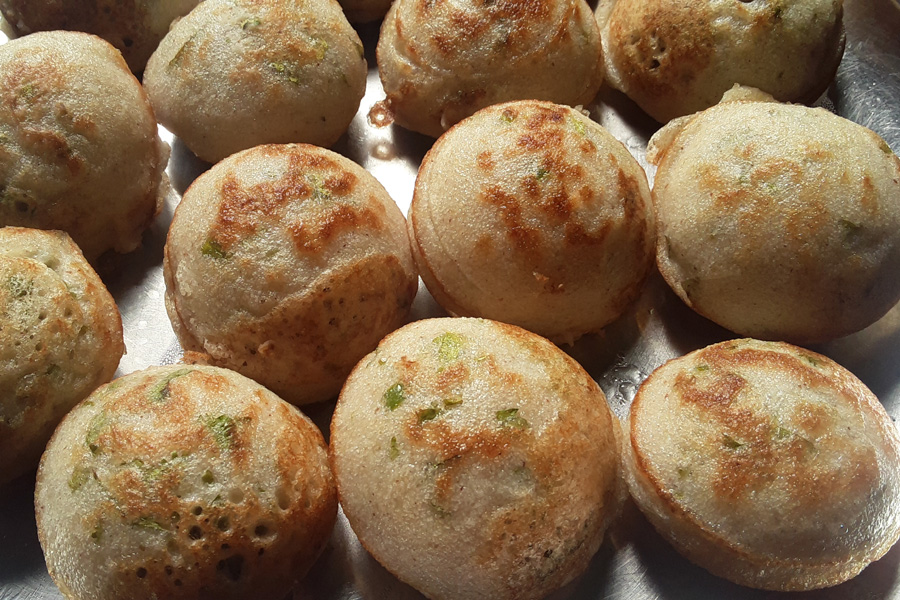

Prep time
11 hrs 30 mins
Cook time
30 mins
Cool off time
0
Total time
12 hrs
Course
Breakfast, Snack
Diet
Vegan, Vegetarian
Difficulty level
Moderate
Servings
35 Gundpongle
Ingredients
- 1 cup regular rice or dosa rice or Idli rice
- 1/4 cup split or whole husked black gram (uddina bele or urad dal)
- 1 tablespoon husked and split Bengal gram (kadle bele or chana dal)
- 1/4 cup think or medium thick flattened rice (avalakki or poha)
- 2 teaspoon fenugreek seeds (mente or methi seeds)
- 2 to 3 green chillies
- 1/2 cup chopped coriander leaves
- Oil as required
- Salt as required
- Water as required for soaking and grinding
Cookware / Utensils
- Gundpongle pan
- Spoon(s) or picker
- Bowl(s)
- Mixer / grinder
Instructions
Instructions
Soak rice and lentils
- Take 1 cup (about 200 grams) regular rice or Idli rice or dosa rice, 1/4 cup (about 50 grams) split or whole husked black gram (uddina bele or urad dal), 1 tablespoon husked and split Bengal gram (kadle bele or chana dal), and 2 teaspoon fenugreek seeds (mente or methi seeds) in a single bowl or in separate bowls.
- Rinse them all 3 to 4 times or until clean. Add required water and soak for 3 to 4 hours, covering the bowl with a lid.
-
30 minutes before grinding, rinse 1/4 cup think or medium thick flattened rice (avalakki or poha) a couple of times or until it is clean. Soak in water, covering the bowl with a lid.
You can use paper or thin flattened rice as well doubling the quantity. If you are using thin flattened rice, no need to soak. Just rinse and grind.
Make batter
- Drain all the water from the soaked rice and lentils and add to a mixer or grinder or blender.
-
Next, drain all the water from the soaked flattened rice (avalakki or poha) and add to the rice and lentils in a mixer.
Depending on the jar capacity you can grind in a single or two batches. -
Add water and grind to a smooth fine batter or to a fine grainy batter. Add water in parts and grind.
The batter should be of medium think consistency, not too thick or thin. -
Transfer the batter to a large bowl. Cover with a lid and let the batter ferment overnight or 8 to 9 hours.
Make sure bowl is large enough as batter volume may increase after fermentation. - Look at the batter the next morning. A well fermented Gundpongle batter with tiny air pockets and nice sour aroma.
- Finely chop 2 to 3 green chillies, and coriander leaves.
- Add finely chopped green chillies and coriander leaves to the batter. Add salt as required.
- Mix well. Now the batter is ready.
Cook Gundpongle
-
Heat the Gundpongle pan. Keep heat to medium.
Add a drop of oil in each mould. You can even just grease the moulds with less oil. -
Take the batter in a spoon or ladle, and fill all the moulds. Start filling the batter to outer moulds first and then the center one. As the heat is usually more in the center, the center Gundpongle will cook quickly.
While filling the batter leave a bit of space on the top of moulds so that there would be sufficient space for Gundpongle to expand.
If you want you can cover with a lid for faster cooking. -
Cook until the batter on the top looks almost firm and the base is golden.
Regulate the heat as required. -
Turn over using spoon (or wooden picker that comes with this Gundpongle pan) and cook the top side until golden.
If any of the sides is not cooked well, turn over and cook again until golden. -
Remove and serve the hot Gundpongle with fresh butter or coconut chutney.
You can also enjoy these Gundpongle as-is.
Step by step guide
Making of the Gundpongle
Soak rice and lentils
1. Take 1 cup (about 200 grams) regular rice or Idli rice or dosa rice, 1/4 cup (about 50 grams) split or whole husked black gram (uddina bele or urad dal), 1 tablespoon husked and split Bengal gram (kadle bele or chana dal), and 2 teaspoon fenugreek seeds (mente or methi seeds) in a single bowl or in separate bowls. In this recipe regular rice is used which is unpolished. So it looks slightly reddish or brown.

2. Rinse them all 3 to 4 times or until clean. Add required water and soak for 3 to 4 hours, covering the bowl with a lid.

3. 30 minutes before grinding, rinse 1/4 cup think or medium thick flattened rice (avalakki or poha) a couple of times or until it is clean. Soak in water, covering the bowl with a lid.
You can use paper or thin flattened rice as well doubling the quantity. If you are using thin flattened rice, no need to soak. Just rinse and grind.


Make batter
4. Drain all the water from the soaked rice and lentils and add to a mixer or grinder or blender.

5. Next, drain all the water from the soaked flattened rice (avalakki or poha) and add to the rice and lentils in a mixer.
Depending on the jar capacity you can grind in a single or two batches.

6. Add water and grind to a smooth fine batter or to a fine grainy batter. Add water in parts and grind.
The batter should be of medium think consistency, not too thick or thin.

7. Transfer the batter to a large bowl. Cover with a lid and let the batter ferment overnight or 8 to 9 hours.
Make sure bowl is large enough as batter volume may increase after fermentation.

8. Look at the batter the next morning. A well fermented Gundpongle batter with tiny air pockets and nice sour aroma.

9. Finely chop 2 to 3 green chillies, and coriander leaves.

10. Add finely chopped green chillies and coriander leaves to the batter. Add salt as required.

11. Mix well. Now the batter is ready.

Cook Gundpongle
12. Heat the Gundpongle pan. Keep heat to medium. Add a drop of oil in each mould. You can even just grease the moulds with less oil.

13. Take the batter in a spoon or ladle, and fill all the moulds. Start filling the batter to outer moulds first and then the center one. As the heat is usually more in the center, the center Gundpongle will cook quickly.
While filling the batter leave a bit of space on the top of moulds so that there would be sufficient space for Gundpongle to expand.
If you want you can cover with a lid for faster cooking.

14. Cook until the batter on the top looks almost firm and the base is golden. Regulate the heat as required.

15. Turn over using spoon (or wooden picker that comes with this Gundpongle pan) and cook the top side until golden.
If any of the sides is not cooked well, turn over and cook again until golden.


16. Remove and serve the hot Gundpongle with fresh butter or coconut chutney. You can also enjoy these Gundpongle as-is.



Notes
- A piece of ginger (shunti or adrak) or a teaspoon of cumin seeds (jeerige or jeera) can be added while grinding or can be crushed and mixed with the fermented batter later.
- Fermentation may take longer hours during winter and monsoon.
- Fermentation time will also vary as per room temperature.
- If the batter is too thick add a tablespoon of curd or buttermilk and mix well. If you are a vegan, you can add required amount of water and mix well.
-
If the batter is watery, keep the fermented batter for few more hours, excess water starts floating on the top. Remove the water. If not, add required quantity of rice flour to the batter and mix well. However, the texture and the taste of the Gundpongle will be different from the original.
While adding rice flour, make sure that you mix the rice flour with water first, without any lumps, and then add to the batter.
